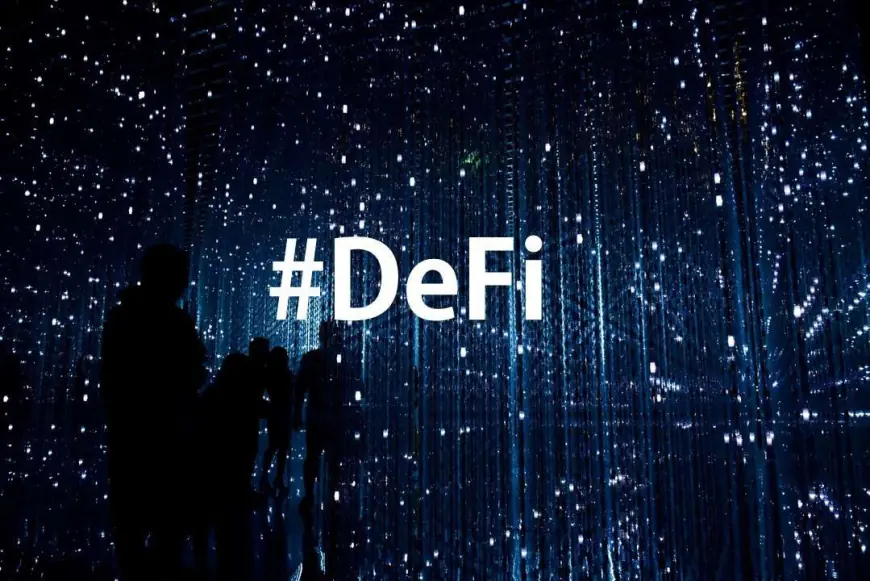DeFi Borrower Behavior in the Spotlight After BIS Study
A recent study by the Bank for International Settlements (BIS) sought to scrutinize the behavior of borrowers in the DeFi space, one half of the equation that powers tens of billions of dollars TVL in lending protocols. The study, which purports to be the first to examine the intricacies of user behavior as well as [...]


A recent study by the Bank for International Settlements (BIS) sought to scrutinize the behavior of borrowers in the DeFi space, one half of the equation that powers tens of billions of dollars TVL in lending protocols.
The study, which purports to be the first to examine the intricacies of user behavior as well as the dynamics of DeFi lending, emphasizes the importance of understanding such behaviors given increased interest among tradfi institutions to tokenize assets like bonds and securities.
Interestingly, one of the report’s findings was that many borrowers prefer to avoid over-leveraging due to the clear and present risk of forced closure and auto-liquidation, whereupon their underlying collateral is sold by the protocol in question. Of course, a minority of borrowers still engage in risky leverage that can wipe them out at any moment due to the crypto market’s inherent volatility.
A Growing DeFi Conservatism
It should be noted that the study only looked at data up until March 2023, a month before Ethereum’s Shanghai upgrade that enabled ETH withdrawals. Since then, LSDFi – DeFi protocols built on top of liquid staking derivatives – has grown in prominence, turbocharging the lending market by enabling users to unlock liquidity from their staked assets.
Nevertheless, the study’s finding that users are, in the main, wary of the risks associated with liquidation is heartening given the portrayal of DeFi as a lawless Wild West awash with greedy speculators and risk-on propositions.
This reality has actually led to the emergence of protocols and dApps that specifically play to the conservatism of today’s DeFi users. A good example of Nolus, the cross-chain ‘lease’ protocol that operates rather differently to the typical lending platforms like Aave and Compound.
With a Nolus DeFi Lease, borrowers can secure up to 150% financing on their initial investments, and gain access to the underlying leveraged assets through whitelisted strategies. To obtain the 150% finance, borrowers simply have to lock up their down payment (in any fiat, stable or digital asset), whereupon they receive 150% above the provided down payment as a stablecoin loan – with both used to purchase the desired digital asset.
Because this down payment together with the loan is locked into a DeFi Lease position and functions as collateral, the margin call risk is reduced by 40% compared to other blockchain lenders. This lowered risk, coupled with 3x the exposure compared to other lenders, a fixed interest rate, and ownership of the underlying asset, makes Nolus an increasingly popular choice.
Launched in June 2023, the protocol has so far processed over $50 million transactions and boasts a total TVL of $4.9m from around 10,000 users. As well as having a unique take on loan issuance, Nolus also treats liquidations differently: rather than liquidating positions in full, it provides partial liquidations to give users more time to recover their position.
Risky Business
Of course, DeFi has not entirely shaken off its risky image – this is still the space where things like flash loans and unsecured loans can flourish. The latter allows institutional investors to borrow crypto without putting up collateral. Effectively, users deposit their capital in single-borrower pools created by institutional borrowers, in exchange for generous interest rates.
DeFi risk goes beyond liquidation dangers and encompasses things like smart contract vulnerabilities, which can be exploited by malicious actors to steal users’ funds. Another risk relates to rug pulls, wherein the creators of protocols shut up shop and make off with their ill-gotten gains. This is another reason to do due diligence before interacting with any DeFi dApp, regardless of how attractive the yields appear.
With decentralized lending TVL having blown past $30 billion for the first time since mid-2022, and DeFi borrower behavior seemingly becoming more conservative over time, some will wonder whether the industry’s reputational baggage is getting lighter. Perhaps permissionless protocols that dispense with intermediaries will soon be seen in a unanimously positive light, rather than traduced by the usual skeptics.
What's Your Reaction?







































































































